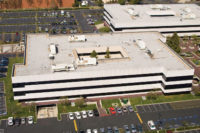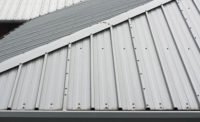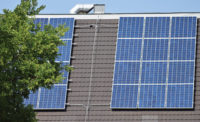The Center for Environmental Innovation in Roofing is pleased to collaborate with Roofing Contractorto provide a monthly perspective about roofing and the environment. During the next 12 months, we will look at many aspects of roofing and sustainability, with a focus on how roofing contractors can become better equipped to participate and profit in the new green building market.
For our first column, we’d like to get right to the bottom line: Why are roofs so important to the environment? The one-sentence answer is, “There are two and a half million reasons!” That’s the surface area of re-roofs installed on nonresidential rooftops every year in the United States. And this vast area of re-roofing is virtually untouched by current green building programs, which tend to focus narrowly on new construction or major building retrofits. It’s also a lot of territory when you consider that the total footprint of buildings certified by the leading green building program (LEED) after more than 10 years is still less than what U.S. roofing contractors install in a single year.
Because of the large commercial building area affected by re-roofing every year, the Center has researched the energy and environmental value of that space to determine its strategic value to our nation. And our findings are truly amazing. If all the existing nonresidential roofs in the United States were retrofitted to meet the most recent standards in the 2012 International Energy Efficiency Code, the annual savings in heating and cooling costs would exceed 700 trillion BTUs. And that savings would be renewable and sustainable because our nation would continue to collect that 700 trillion BTU benefit each and every year for decades to come. Not only can we save amazing amounts of energy, we also can produce new clean energy using available commercial rooftop space. If one one-quarter of existing commercial rooftop space were suitable for some form of solar power (photovoltaic, solar thermal or daylighting), the total energy produced would exceed the power of 20 Grand Coulee Dams.
But energy savings and production are just the start for our nation’s rooftops. Through improvements in reducing roofing waste and recycling roofing materials, our industry can make a greater impact than any other industry in reducing solid waste in this country. Currently, construction waste accounts for 25 percent of all solid waste, and roofing accounts for 25 percent of the construction waste total. That means that a 50 percent reduction in roofing waste could reduce overall solid waste in the United States by more than 3 percent.
The same benefits of scale apply to many other important environmental impacts. Roofs can reduce unwanted storm water runoff while capturing and diverting rainwater for other important building uses. Cool roof surfaces can help mitigate the effects of the urban heat island effect, reduce the need for peak electricity production and offset global warming. Because roofing products can be manufacturer from a wide variety of raw materials, the roofing industry offers one of the best opportunities to develop new products with reduced environmental impact. And finally, a well-designed and well-maintained roof can extend the service life of buildings and help ensure a safe environment for the people who work and live in them.
Given this amazing potential for environmental benefit, it’s easy to see why the Center and its members are excited about the role of roofing in green buildings. And although, we actually have two and a half million reasons to talk about, we’ll focus on a few of the best reasons during the coming months. Please join us!




